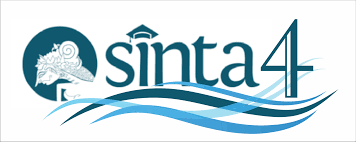PERBANDINGAN METODE DOLLAR COST AVERAGING (DCA) DAN LUMP SUM (LS) SEBAGAI STRATEGI UNTUK MENGOPTIMALISASI INVESTASI SAHAM LQ45 DI BURSA EFEK INDONESIA
Abstract
Dollar Cost Averaging merupakan strategi investasi yang melibatkan investasi sejumlah uang tetap pada instrumen investasi yang sama secara berkala. Sedangkan Lump Sum berarti menginvestasikan seluruh dana di awal periode, tanpa melakukan investasi tambahan seiring waktu. Tujuan dari penelitian ini adalah untuk mengetahui bagaimana mengoptimalkan investasi saham dengan menggunakan metode dollar cost averaging dan metode Lump Sum serta untuk membandingkan kinerja antara metode dollar cost averaging dan metode Lump Sum berdasarkan hasil return. Penelitian ini menggunakan metode deskriptif dengan pendekatan kuantitatif dimana penelitian ini menggunakan 3 perusahaan di sektor tindustri yang berbeda dengan market cap terbesar yang terdaftar di Bursa Efek Indonesia periode 2022-2023. Hasil penelitian ini menemukan bahwa return metode Lump Sum tahun 2022 pada saham AMRT mencapai 146 %, saham BBRI sebesar 18,75% dan saham ASII sebesar 7,3% lebih tinggi daripada return dollar cost averaging pada saham AMRT sebesar 44,1%, BBRI sebesar 8,8% dan ASII -11,2%. Return metode Lump Sum tahun 2022 merupakan return tertinggi daripada tahun 2023. Hasil tersebut membuktikan bahwa metode Lump Sum lebih optimal dibandingkan dengan metode dollar cost averaging.

This work is licensed under a Creative Commons Attribution-NonCommercial-NoDerivatives 4.0 International License.
An author who publishes in the Jurnal Darma Agung agrees to the following terms:
- Author retains the copyright and grants the journal the right of first publication of the work simultaneously licensed under the Creative Commons Attribution-ShareAlike 4.0 License that allows others to share the work with an acknowledgement of the work's authorship and initial publication in this journal
- Author is able to enter into separate, additional contractual arrangements for the non-exclusive distribution of the journal's published version of the work (e.g., post it to an institutional repository or publish it in a book) with the acknowledgement of its initial publication in this journal.
- Author is permitted and encouraged to post his/her work online (e.g., in institutional repositories or on their website) prior to and during the submission process, as it can lead to productive exchanges, as well as earlier and greater citation of the published work (See The Effect of Open Access).













